|
|
Number
Punch Able To Easily Penetrate
Hardened Die Steel!
Earlier study debunked!
by Ken Potter - NLG
Photomicrographs © Ken Potter 2007
I read with interest Eric von Klinger's March 5, 2007 page 5, Coin World article reviewing the findings of Chris Pilliod's experiments in relation to the 2004-D Wisconsin quarter varieties. He asserted that the leaf-like impressions had to be placed into a die that was in its softened state.
However, I questioned those assertions. I felt that a hardened die could be dented with hand force so I tried some experiments of my own. Using moderate force to a number-punch via what might have been a heavier mallet than what Pilliod used but appropriate to the task, I was able to easily sink impressions into a hardened die. In fact, lighter but well-placed whacks of my mallet resulted in deeper impressions than wild but heavier blows which seemed to invariably cause the die and mallet to careen to the sides.
At this point I maintain that hardened dies can be impacted with hand tools leaving behind impressions!
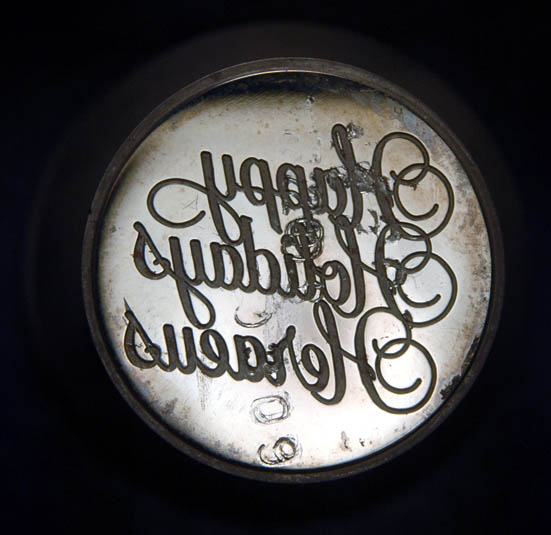
A fully hardened "Happy Holidays" die was impressed with a number-punch several times via a mallet to see how deep it could penetrate and
how long the punch could last "striking" hardened die steel. The
die was struck five times; once on the butt end to test it and then four more times on the
face.
Numbers from the punch can be seen scattered about the face of the die but our
focus will be on the two overlapping zeros just a hair's breadth north of center
since they are the ones photographed below.
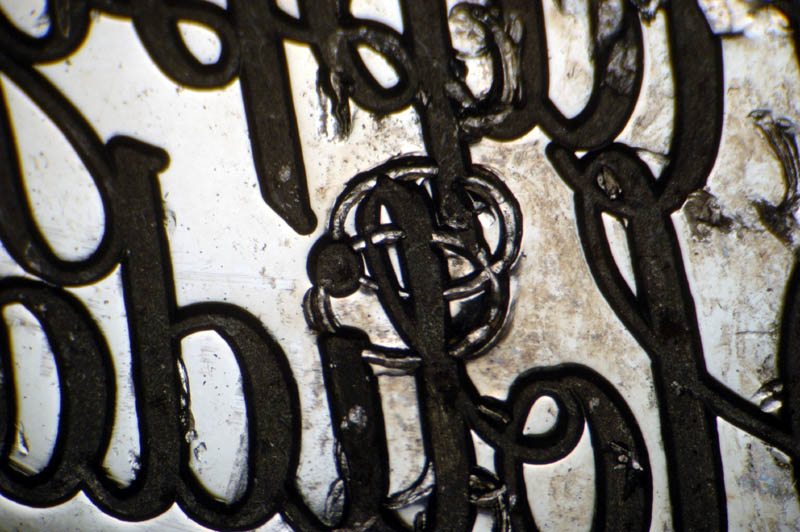
Here is a close up of the central area of the die were we can see a horizontal
zero impressed into the die twice with an overlap.
Down lower we can see additional evidence of the zero punched into the die
several times. Another important observation
to make in this photo is the doubling that can be seen on the top of the
horizontal "2" that is located all the way over to the upper right
side of this image. This doubling resulted from a single blow of the
mallet to the punch yet it still resulted in the top of the 2 being severely
doubled, perhaps similar to what we see on the Wisconsin quarter with the
alleged low-leaf which seems doubled. As a quality inspector in a stamping
operation, I see this kind of doubling very frequently on items impacted with
part numbers from a single cycle of the punch mechanism. It appears to be
a form of punch-bounce but it occurs so fast they you really cannot see it
happen. This is one cause that I have theorized for many or most Repunched
Mintmarks for decades and which appears to be borne out here as proven to be
fact rather than theory -- even on a hardened die!
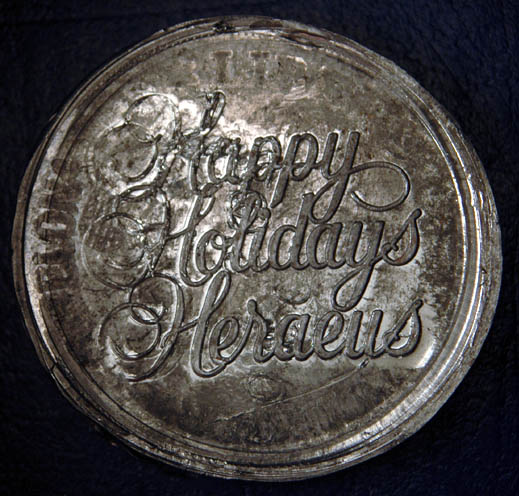
Here is a lead trial strike I made from the die that shows just how high the 0/0
struck up.
(I struck this lead trial on top of another earlier lead trial and thus
the evidence of an understrike shows and should be ignored for the purpose of
this study)
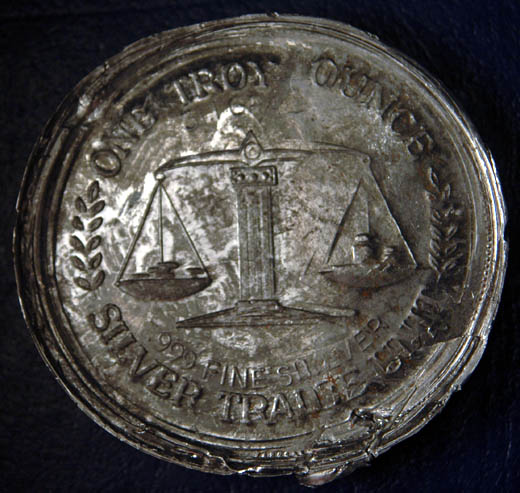
A look at the reverse of the lead die trial that I struck (not a part of this
study but interesting to see).
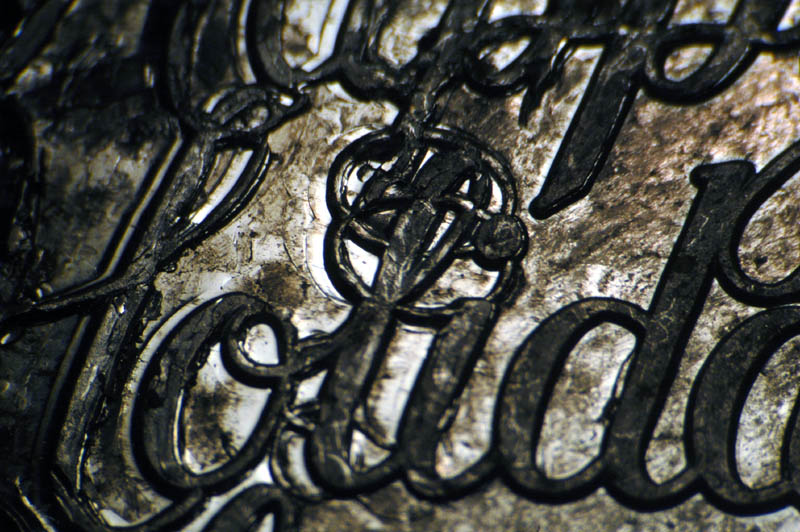
In this photomicrograph of the central area of the lead trial, we can see the two
overlapping horizontal zeros were punched into the hardened die to a depth that allows the zeros to be raised
just as high as other design details! These represented blows #2 and
#3 from my mallet and show that there was virtually no deterioration of the
punch -- if any at this point!
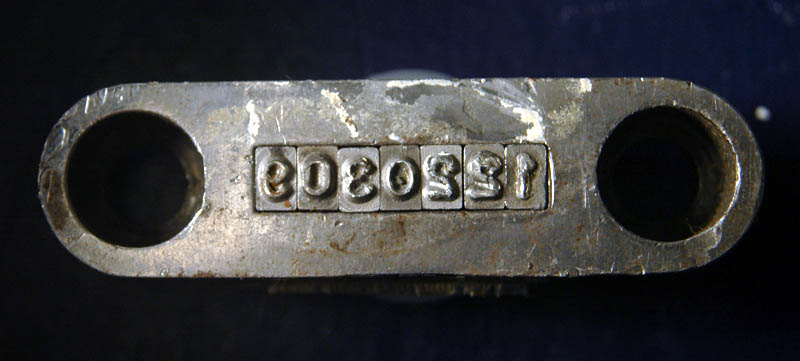
Here is a look at the punch that was laid on the face of the die and hit with a
mallet. Interestingly, some of the numbers faired well including the centermost
zero that caused the most heavy impressions into the center of the die. It did not begin
to deteriorate until after the fifth blow of the mallet. Other numbers
began to break up sooner but it should be noted many were already starting to break up from being
used for tens of thousands or more earlier impressions in soft steel.
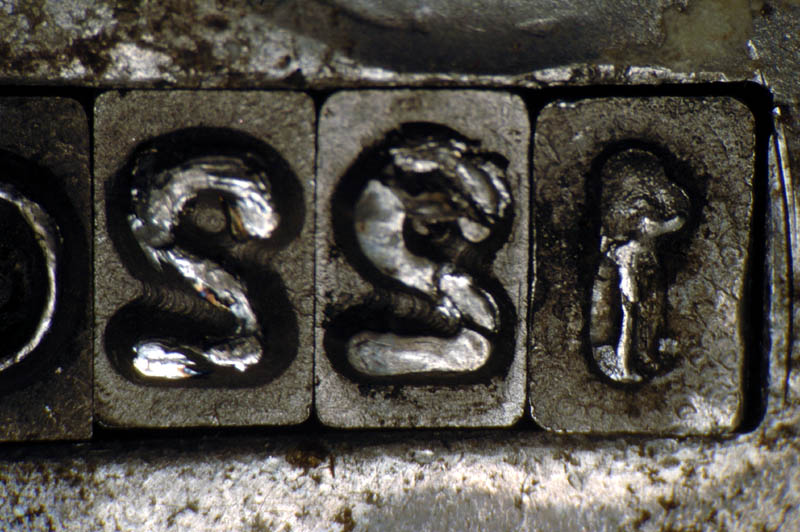
Here we see that the hardness of the die was able to quickly deteriorate the numbers within the punch but not until after the punch was able to penetrate
into the die and leave behind significantly deep and crisp impressions!
Most of the deterioration resulted from the die not being secured in a vice and
the mallet and die careening to sides. This sideways motion of the die and
punch caused sheering or smearing of numbers on the punch.
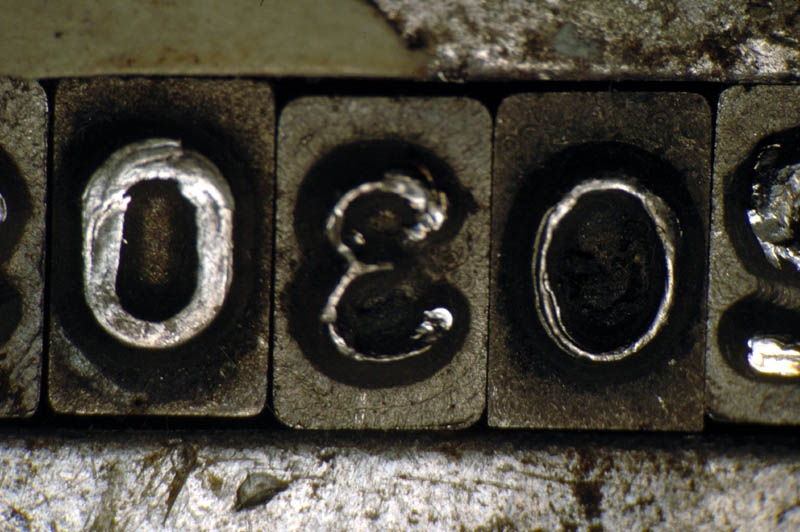
Another look at the other end of the deteriorating punch including the centermost
zero that remains rather crisp in spite of causing the deepest impressions.

Here is a U.S. Mint 1998 defaced five-cents die I punched with the deteriorated
number punch after it had been used to punch the earlier die.
Even after the punch had begun to deteriorate it could still
impress letters into the hardened steel of this US Mint die! Later I took
this die to a bench and fixed it into a vice where it could be held in place
better and was able to punch that same punch into it many more times. In
conclusion, it is my contention that hardened dies can be impressed with hand
held tools and moderate punching pressure though there is some detriment to the
tools that will take place after a number of blows.
